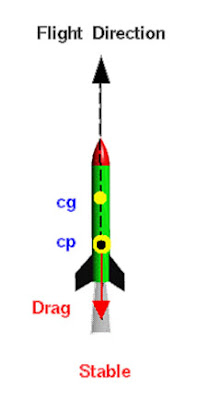To know,"How do Rockets work", we have to know what actually rocket is. Simply, a rocket is such a system or machine which is used to lift any satellites or space probes to a certain orbit of any celestial object in space.
Rockets history:
As written in the history, one of the first rocket like object was a wooden bird which was launched by Archytas, who used to live in a city of Tarentum (this place is in the somewhere of southern Italy). He made a wooden pigeon and shocked the whole city by flying it into the air. It was based on the principle of Newton's 3rd law.After almost 300 years of this discovery a Greek citizen -Hero of Alexandria, invented a device which principle was also based on modern rocket system. It was named as aeolipile. It was consisted of a sphere and a water kettle. He mounted the sphere on the top of the kettle which was movable. In the opposite direction of the sphere, there were two L-shaped tubes. The kettle was filled with water and it was boiled by applying fire below the kettle. After reaching and acceding the boiling point, water turns into steam and the steam comes out through the L-shaped tubes causing rotation of the sphere. This is the basic principle of rocket.
The very first mechanical rocket was first introduced by chinese which was the beginning of rocket era. They used some tubes filled with gunpowder attached in some long bamboos. After firing the gunpowder it applied forces through the tube and the rocket moved to its opposite direction. This was the very first rocket which started the concept of modern rocket.
Rockets principle:
Rocket principle is based on Newton's 3rd law of motion. According to this law: every action has its opposite reaction. That means, when any force is applied in a direction, then this action also applies the same amount of force to its opposite direction.The rocket has a propulsion engine which applies a thrust to the bottom by burning its fuels and the rocket moves to the upward due to action reaction law. The thrust should be sufficient so that it can exceed the Escape Velocity to lift the rocket upward. The escape velocity of earth is about 11.2 km/s. That is why to launch any space probes, we need a great push, otherwise it will again fall to the earth due to the gravitational field covered by it.
Different types of rockets:
There are different types of rockets. Some of them are -- Missiles.
- Space rockets such as PSLV, GSLV MARK III, Atlas V etc.
- Aircrafts.
- Rocket torpedoes.
- Rocket trains and many more.
Rockets Design:
1. Rockets engine:
It works on the basis of jet propulsion system. Today's many aircrafts are designed using this system. Jet propulsion is nothing but a technique which is used to apply a sufficient pressure so that the craft moves to its opposite direction. There are several types of engines used in rockets. They are - thermal rocket engine (this type of engine is powered by electricity or nuclear power), solid-fuel rocket engine (this type of engine uses solid state propellants), liquid-propellant rocket engine (this type of rocket engine uses liquid propellant as fuels), hybrid rocket engine (this type of rocket engine uses solid propellant in combustion chamber but also uses liquid or gas propellant for combustion process) and monopropellant rocket engine (this type of rocket engine uses single or mono propellant).2. Propellant:
Propellant is the most important part of a rocket system. The propellants are kept in the reaction engine or rocket engine. For thermal rocket engines, electric or nuclear power are used; but for chemical rocket engines, some fuel propellants are used. Due to chemical reactions, they produce very hot gas and these gases provides sufficient thrust to the rocket. For monopropellant rocket engines some extra propellants are used like hydrazine, nitrous oxide etc.The overall design of the rocket depends upon its application. Today's most of the rockets are made as multi staged to increase its strength. The satellites are kept in the top of the rocket so that it can get separated after reaching its destination.
Rockets control:
After launching a rocket, it is very important to control it. It is not so easy like flying a kite in the sky. The rocket keeps travelling exact in the vertical direction until it passes the troposphere.After passing the troposphere, the rocket is inclined with a small angle. This inclination is called Pitching. The control center manages this pitching and it gives sufficient boost to the rocket. As the rocket is made multi staged that is why, after burning the stages it automatically gets separated from the main rocket which helps to lose the weight of the rocket hence accelerating its speed. The final stage which gives the ultimate boost to the rocket is called Delta V. After Delta V, the rocket starts burning and accelerates its speed to the ultimate level. When the rocket reach its final destination, it separates the satellite from it and the control center starts working with the satellite.
Applications:
There are huge applications of rockets. Some of them are -- In military and weaponry.
- In scientific research.
- Sending probes to space.
- Rescue operations.
- Fun and sports.











0 Comments
Please do not enter any spam link in the comment box..